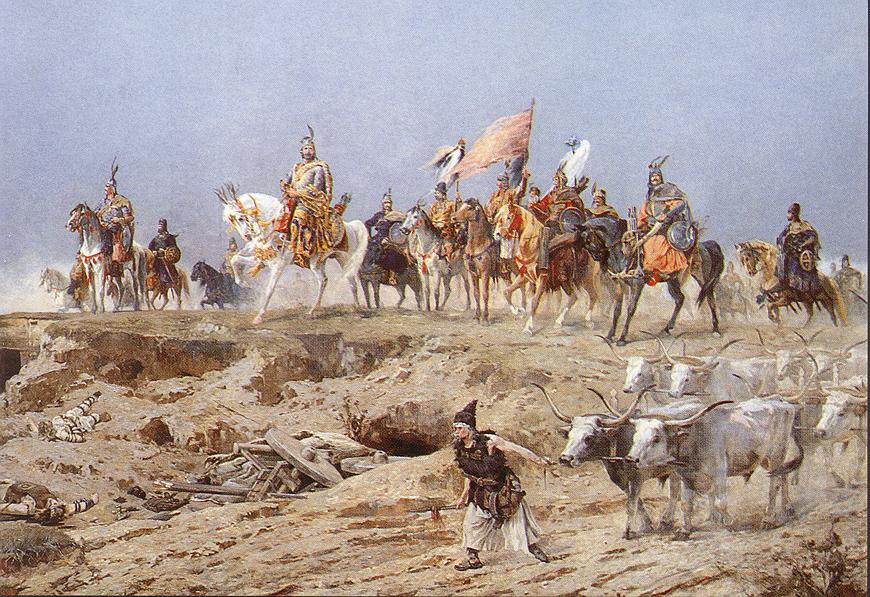With Especial Attention to the Americans, the Muscovites, the Magyars, and Various Balkanic Peoples, touching particularly upon their Aspirations to Global Hegemony, and their Use of Air-Conditioning.
Justin E. H. Smith
 Organic nationalism, which emerged towards the end of the 18th century, supposed, or at least implied, that a nation bears some essential relationship to a particular territory. In the most mythologized version of this belief, the nation is thought, or at least said, to have arisen directly out of the earth, to be literally autochthonous, springing up from the depths without any connection to neighboring groups. Moderate nationalists of the period, such as Johann Gottfried Herder, sought for a way to defend national distinctness without resorting to such crude myth, and while they did not pretend that a people is born directly from the soil, they still hoped to tie national character to the way it is forged over the course of history out of a particular geographical nexus.
Organic nationalism, which emerged towards the end of the 18th century, supposed, or at least implied, that a nation bears some essential relationship to a particular territory. In the most mythologized version of this belief, the nation is thought, or at least said, to have arisen directly out of the earth, to be literally autochthonous, springing up from the depths without any connection to neighboring groups. Moderate nationalists of the period, such as Johann Gottfried Herder, sought for a way to defend national distinctness without resorting to such crude myth, and while they did not pretend that a people is born directly from the soil, they still hoped to tie national character to the way it is forged over the course of history out of a particular geographical nexus.
A clear demonstration that we are not in fact like plants, rooted in our national soil, is our ability to get up, should we so choose, and go somewhere else. We do not wilt and die, though we also do not remain quite the same. I am an expatriate, and it grows harder with each passing year for me to maintain a personal sense of what being American must mean. I have lived outside of the US steadily for seven years, and spent large segments of the decade before that outside of the country as well. Although I am fully connected, via the internet, to the American media that keep that country's pulse around the clock, it is increasingly difficult for me to maintain any real interest in domestic issues. Unlike nearly all the Americans I know, I am not really made angry, for example, by Glenn Beck. Outraged reactions to the latest stupid thing he has said strike me, I dare say, as a bit undignified. He is a buffoon, and he occupies a niche that has its equivalent in every time and place. Let him do his thing, and let us not stay tuned in to the networks that give him voice.
Expatriation, I mean to say, helps one to overcome the passions with understanding. As my identification with one or the other party to internal American conflicts diminishes, my perception grows sharper of the very long historical processes that give shape to current American life. Thus for example I often find myself trying to make sense for bewildered Europeans of western American crackpot libertarianism by arguing that it evolved directly from the settling of the frontier, with the ethnic cleansing and genocide that that involved, but also with a certain 'spirit' of freedom and individualism that cannot be valued nearly as much in dense urban centers. In turn, it seems reasonable to me to suppose that American imperialism, and the delusions of entitlement and superiority for which individual Americans abroad are so often criticized, flow directly from the late-18th and early-19th-century project of constructing America through expansion into the frontier. Oklahoma and the Phillipines and Iraq were just different stages of the same development, and this centuries-long process has something to do with the perception of the world, and of their place in it, often had by individual Americans.
Read more »
“Eclipse,” opening June 30, is the third big-screen adaptation of Stephenie

